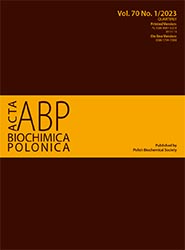Ellagic acid inhibits cell proliferation, migration, and invasion of anaplastic thyroid cancer cells via the Wnt/β-catenin and PI3K/Akt pathways
Abstract
Anaplastic thyroid cancer (ATC) is a rare but lethal human malignant cancer with no known cure. Ellagic acid (EA), a natural plant extract, has shown antitumor activity against multiple cancers; however, its effects on the malignant phenotypes of ATC cells remain unknown. This study aimed to evaluate the effects of EA on proliferation, migration, and invasion of ATC cells and further explore the associated signaling mechanisms. The normal human thyroid cell line Nthy-ori3-1 and ATC cell line BHT-101 were used. Cytotoxicity assay was performed using the Cell Counting kit-8 (CCK-8) assay. Cell proliferation, migration, and invasion assays were performed using the CCK-8 and colony formation, wound healing, and Transwell invasion assays, respectively. Western blotting was used to detect the levels of related proteins. β-catenin nuclear protein levels were measured to evaluate the Wnt/β-catenin pathway. The phosphorylation level of the Akt protein was measured and calculated to evaluate the PI3K/Akt pathway. LiCl and IGF-1 were used as pathway agonists to determine the involvement of the corresponding pathway. The results showed that EA inhibited the proliferation, migration, and invasion of ATC cells. Furthermore, both the Wnt/β-catenin and PI3K/Akt pathways were suppressed by EA treatment, and activation of these two pathways reversed the EA-induced inhibition of the pathological phenotypes of ATC cells. These findings demonstrate that EA inhibits proliferation, migration, and invasion of ATC cells by suppressing the Wnt/β-catenin and PI3K/Akt pathways, suggesting that EA is a potential drug candidate for treating ATC and provides a theoretical basis for further in vivo experiments and clinical applications.
Acta Biochimica Polonica is an OpenAccess quarterly and publishes four issues a year. All contents are distributed under the Creative Commons Attribution-ShareAlike 4.0 International (CC BY 4.0) license. Everybody may use the content following terms: Attribution — You must give appropriate credit, provide a link to the license, and indicate if changes were made. You may do so in any reasonable manner, but not in any way that suggests the licensor endorses you or your use.
Copyright for all published papers © stays with the authors.
Copyright for the journal: © Polish Biochemical Society.


